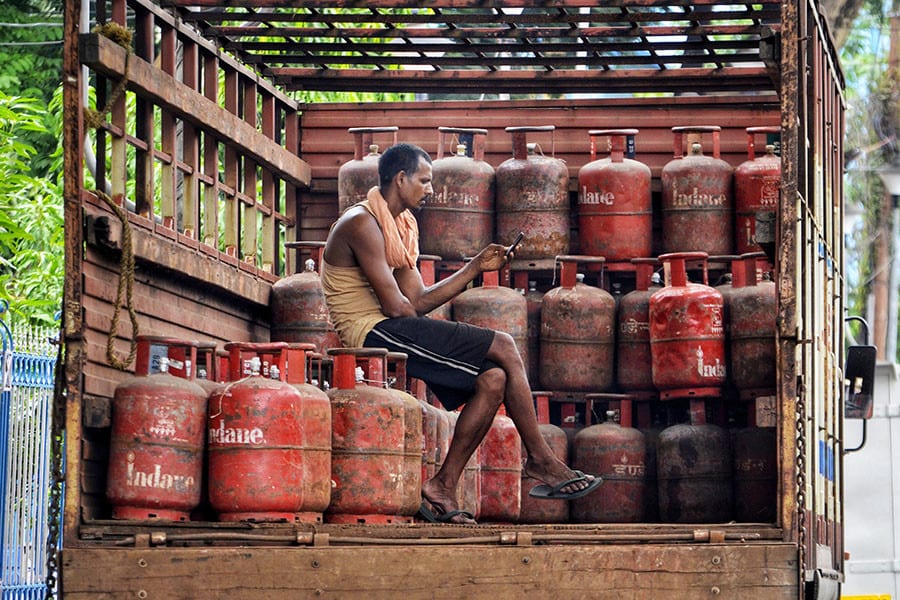
Why the government's LPG price slash came at the right time
Sixty-four percent citizens were using their savings to pay high LPG prices, says survey
 70 percent of households in India utilise LPG as their main cooking fuel, despite the fact that only 85 percent of them possess LPG connections. Image: Indranil Aditya/NurPhoto via Getty Images
70 percent of households in India utilise LPG as their main cooking fuel, despite the fact that only 85 percent of them possess LPG connections. Image: Indranil Aditya/NurPhoto via Getty Images
As part of the Pradhan Mantri Ujjwala Yojana, the central government on Tuesday announced an extra subsidy of Rs 200 for each household cooking gas or Liquefied Petroleum Gas (LPG) cylinder. The move is anticipated to bring relief to households belonging to the middle- and lower-middle class brackets, a significant number of whom buy extra cylinders at market prices once they have used up their monthly allotment of subsidised ones.
As per a study conducted by the Council on Energy, Environment and Water (CEEW) and the Initiative for Sustainable Energy Policy (ISEP), over 70 percent of households in India utilise LPG as their main cooking fuel, despite the fact that only 85 percent of them possess LPG connections. Additionally, as of April 2022, a typical rural household allocated 11 percent of the monthly household budget towards acquiring cooking fuel, up from 4.9 percent in March 2020.
LocalCircles, a social media platform and pollster focusing on governance, public, and consumer interest issues, conducted a survey over the last three months, in an attempt to understand how households have been coping with high cooking gas prices. Throughout the current year, there has been a consistent upward trajectory in the cost of 14.2 kg LPG cooking gas cylinders without subsidies. In July, oil marketing companies raised the cost of household LPG cylinders by Rs 50, marking the third increase after two earlier increments in May. At present, the rates for non-subsidised domestic LPG cylinders in Delhi are at Rs 1,103, as per the survey report.
The LocalCircles survey, which received 21,000 responses from LPG consumers from over 300 districts indicated that out of every 10 households, 7 had been making efforts to manage their cooking gas expenses within the range of Rs 1,250. Among them, 10 percent were employing budget-conscious measures by restricting their utilisation of cooking gas. On asking how much a household spends on gas, 61 percent indicated that they have been limiting their expenses on cooking gas to between Rs 750-1,250; another 15 percent indicated between Rs 1,250-2,500; 3 percent spent between Rs 2,500-3,750 and yet another 3 percent over Rs 5,000.
The survey further highlighted that 70 percent of households are working towards maintaining their cooking gas costs under Rs 1,250. Among this group, 10 percent are employing stricter budget controls by reducing their cooking gas usage. As laid out by the CEEW report, numerous families are adopting a multifaceted approach by incorporating wood and alternative fuel sources alongside cooking gas to sustain their kitchen fires.
In light of the cooking gas prices experiencing a surge of 15-20 percent within the past year, the survey aimed to inquire from citizens: "How are you managing with these elevated prices?" Despite the financial impact on their household budgets, 64 percent respondents conveyed that they are compensating by utilising their savings. Out of a total of 10,587 respondents to this questions, 7 percent indicated that they are reducing cooking gas consumption through alternative cooking methods; 14 percent mentioned that reducing non-essential expenditures to accommodate higher cooking gas costs; 7 percent have adopted a combination of both alternative cooking methods and cutting down discretionary spending.








